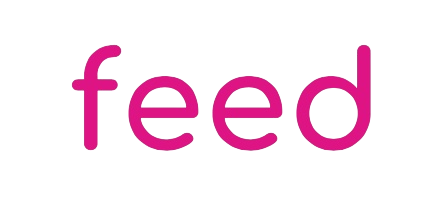
what you need for formula feeding
Formula feeding requires some gear. At a minimum you’ll need the formula itself (stating the obvious there!) as well as some bottles and a means of cleaning and sterilising them.
There are a whole host of other not-necessary-but-nice-to-have items on the market for you, as with anything, you can spend as little or as much as you are happy to. Some items can be bought second hand but always check the items are not damaged and thoroughly clean and sterile before using.
Here’s our guide:
£8.50 - £20 per 800g tin
Formula
Formula is available in powder form or ready-to-feed (RTF).
The powder generally comes in an 800g tub and is the cheaper option. RTF is available in 200ml or 1 litre volumes. As your baby grows you will need more formula so the cost will increase over the first couple of months, stabilise, and then decrease as you introduce solids into their diet.
For powdered formula we estimate the cost will range from £8.50 - £20 per week in the first couple of weeks rising to £25 - £60 per week at peak intake. Prices are often changing, having been impacted by the cost of living crisis and inflation - so keep an eye on this.
£1- £8 each
You’ll need between 4 and 8.
Bottles
Ideally, we would recommend enough bottles to see you through a days worth of feeds, so around 8, but if money is tight you can definitely work with fewer. Generally, baby bottles come in two sizes; up to 5 ounces and up to 10 ounces. Depending on the baby, they will start drinking more than 5 ounces of formula per feed after a few weeks so you might want to skip buying the smaller ones and just go for a set of the larger size.
Some brands make bottles that double up as sippy cups: they have detachable handles and you can switch the teats out for a silicone spout when it is time for introducing a cup. The benefits of these type of bottles is the reduced cost of moving to a cup (you only need to buy the spouts) and easy cleaning as there are no fiddly straws or parts that are difficult, or impossible in some cases, to clean!
Teats
£3 - 10 for two
Replace at least once, more if damaged or worn.
Talking of teats, each bottle comes with a teat to start off with.
Check what size or flow they are before feeding your wee one. Some brands supply faster flow or large teats with their bigger volume bottles so, if you’ve gone with the larger size, you may need to buy some slow flow or small teats to start off with.
You will need to replace the teats for all of your bottles if or when your baby is ready for a faster flow.
You will also need to replace any damaged teats as and when required.
Washing and sterilising equipment
As well as your trusty washing up liquid and bottle brush, you’ll need something to sterilise your bottles in. There are different methods of sterilisation so the cost will depend on what one you choose.
The cheapest option is using sterilising fluid; you’ll need the tablets, which are a couple of quid for a pack, and a tub to make up the fluid in. You can use any plastic tub as long as it’s big enough for all your gear or you can buy a sterilising kit from the leading sterilising fluid company (that rhymes with Stilton) for around £12 - £15.
If you’d prefer to steam sterilise your feeding equipment (and other random baby paraphernalia!) you have two options: a microwave steriliser or an electric steriliser. The main difference is the cost. A microwave steriliser will set you back about £15 on average, and the electric version will cost anywhere from £25 up to around £75 for the top brand.
Unnecessary but handy shizzle
The above items are your formula feeding must haves. But, as with everything baby related, there is a whole industry geared up around helping you spend your hard earned cash make your life easier with their latest super product! Formula feeding is no different.
Here are some of the most popular formula feeding nice-to-have's:
Formula powder dispensers
£5 - £10
Portion your formula in the exact amounts required
Formula Prep Machine
£60 - £235
Not recommended but handy nonetheless. See our page on prep machines.
Bottle Drying Rack
£10 - £25
Totally unnecessary but some look quite funky!
Insulated bottle bag
£8 - £20
Keep bottles hot or cool when you’re on the go
Travel formula tub
£8 - £12
Handy for smaller amounts of formula, for out and about or leaving at Grannie’s.
Bottle Warmer
£8 - £35
Can also get travel version with car/travel adapter
Formula Pitcher
£12 - £15
Useful but not recommended: see our bottle making guide
Bottle Crate
approx. £7
If you love storage solutions as much as us you’ll love this!











